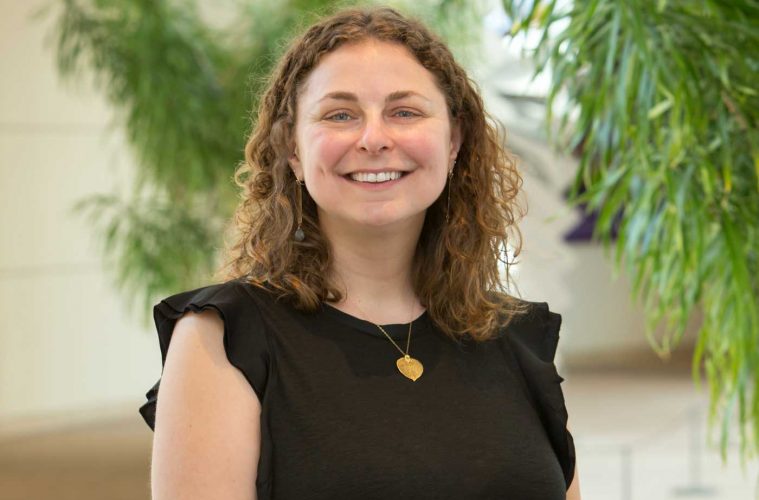How does great art make you feel, and where does that feeling come from?
“Art museums create art experiences. All experiences are created in our brains,” says Dan Monroe, the director and CEO of the Peabody Essex Museum in Salem. So if you want to make an experience better, there seems only one place to start.
“It would be a good idea to see how brains work,” Monroe says.
It’s a leap of logic that makes perfect sense, but one that hasn’t been explored much in the art world. All of that is about to change, though, and the Peabody Essex Museum is leading the way: The PEM recently became the first art museum in the world to hire a neuroscience researcher.
The Harvard-trained Dr. Tedi Asher will spend a year—and perhaps longer—assessing how the latest brain research about topics like visual processing, attention, and spatial navigation can be applied to art museum exhibition and design, all toward making the visitor experience richer and more meaningful.
“It just seemed transparently obvious and clear that once you accept the notion that all of our experiences are created in our brains is a very clear step,” Monroe says.
Monroe describes himself as “plagued with intense curiosity that takes me into many arenas beyond art and culture,” including neuroscience, which he’s been reading about extensively. He realized that museums spend a lot of time, money, and energy in attracting and directing people’s attention.
“Learning how attention systems work became one of the most immediate interests in relationship to what we do at PEM,” he says.
He also realized that really digging into and applying this idea required extensive knowledge and research from experts. So, with the help of a $130,000 grant from the Barr Foundation, the PEM committed itself to studying neuroscience and art more deeply. In addition to working with the museum’s interpretive team to apply and test neuroscience principles, Asher will work with the museum to author a publication that will guide the museum’s application of neuroscience knowledge. PEM plans to share that publication with art museums worldwide.
“I think this publication will be a way to provide a framework that we have tested so that others can learn from our experiences,” Asher says.
Changing the experience
Dr. Asher’s hiring is only the latest way PEM has already been experimenting with making the experience of visiting more meaningful and multisensory. For 101 days last year, dancers from the BoSoma Dance Company performed in the gallery alongside the museum’s exhibition Rodin: Transforming Sculpture. Smells from the spice trade—large jars of cinnamon, pepper, and cloves—transported PEM visitors to the 17th-century Dutch golden age in its Asia in Amsterdam exhibition. And music that inspired sculptor Alexander Calder played at the exhibition Calder and Abstraction: From Avant-Garde to Iconic. Visitors this fall can experience something similar when a pianist will play Marlene Dietrich’s piano on weekends during PEM’s Ocean Liners: Glamor, Speed, and Style exhibition, on view through October 9.
For Asher, this multisensory approach makes sense.
“The literature reflects that when individuals learn new information using more than one sense, they actually use it better,” she says. “At a neurological level, you can imagine that if you’re seeing something that’s communicating a message, and also hearing a sound that’s communicating that same thing, more parts of the brain will be activated.”
Digging into the literature
So far, Asher says she’s been combing the neuroscience literature for findings relevant to how art is presented, as well as meeting with curators and interpreters to discuss ways to apply that information. For instance, she’s very interested in visual processing, how we allocate our attention, and how we make spatial decisions. Findings in these areas might translate into how objects in a museum are grouped together and how guests move through an exhibition.
“The idea of putting a lot of art objects in the same space, in the same visual field, I think can be distracting. When you have multiple objects in one visual field, the way that each of those objects is represented in the brain is weaker,” Asher says. “This manifests behaviorally as distraction.”
Other research about brain activity during rest periods might translate into creating calm spaces in between exhibitions that allow viewers to digest what they’ve just seen and prepare for the next thing they’re about to see, the way palate cleansers prepare our mouths for tasting different flavors.
Asher is also interested in “the role that expectation plays in guiding attention and creating a sense of meaning and satisfaction in an experience.”
“It’s a delicate balance between meeting those expectations and violating those expectations that really hits home with people,” she says.
Making it personal
What all these efforts have in common is making the experience of visiting an art museum reflect the give-and-take between art and the viewer. For instance, Monroe says the typical information plaques that accompany pieces of art aren’t a very effective way to convey information. They’re one-way statements that people only spend about 2.5 seconds reading.
“The whole notion that there’s a right and wrong way to see a work of art is actually not a good way to get people to feel engaged,” Monroe says. It’s no wonder that he often hears people saying they don’t feel entirely comfortable in art museums. Instead, people feel more at home—and learn more—when they make a personal connection.
“Asking people questions is much more effective in helping them engage than telling them what to look at,” he says. “For any kind of experience, it has the greatest relevance to us if, in fact, we connect it to our own experience and our own life and our own values.”
Peabody Essex Museum

